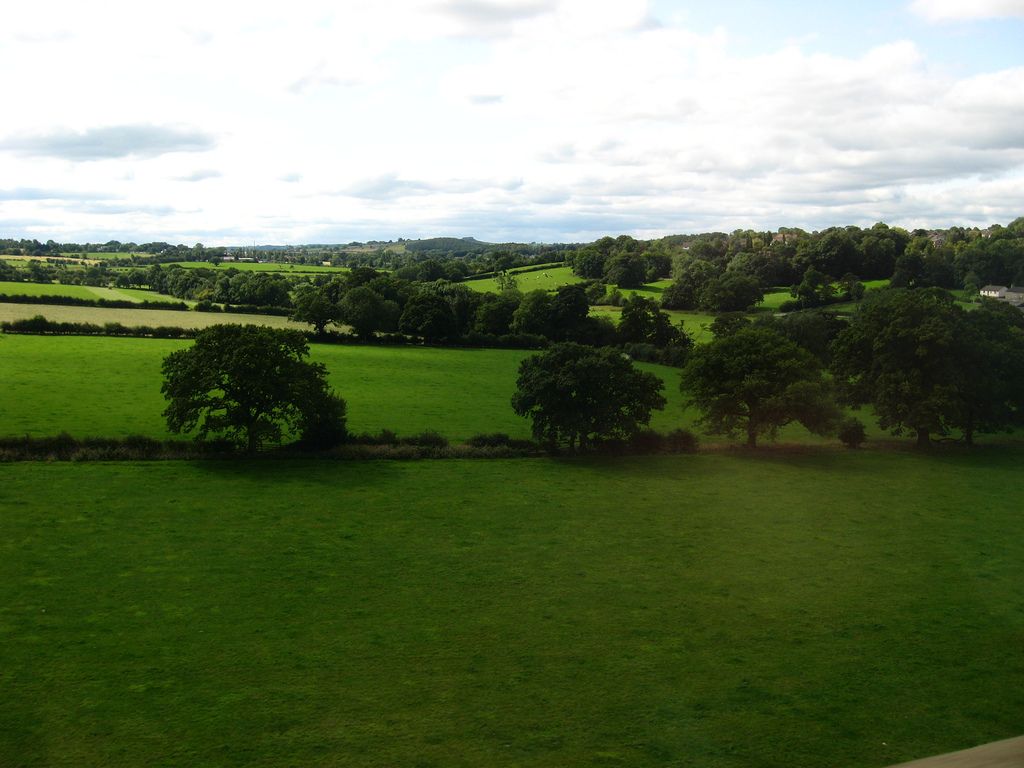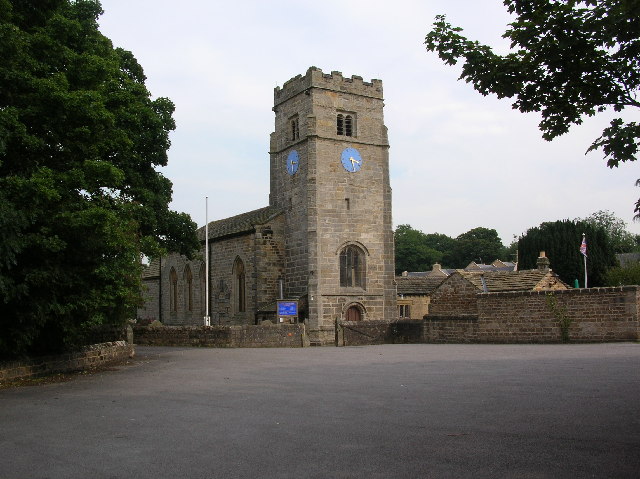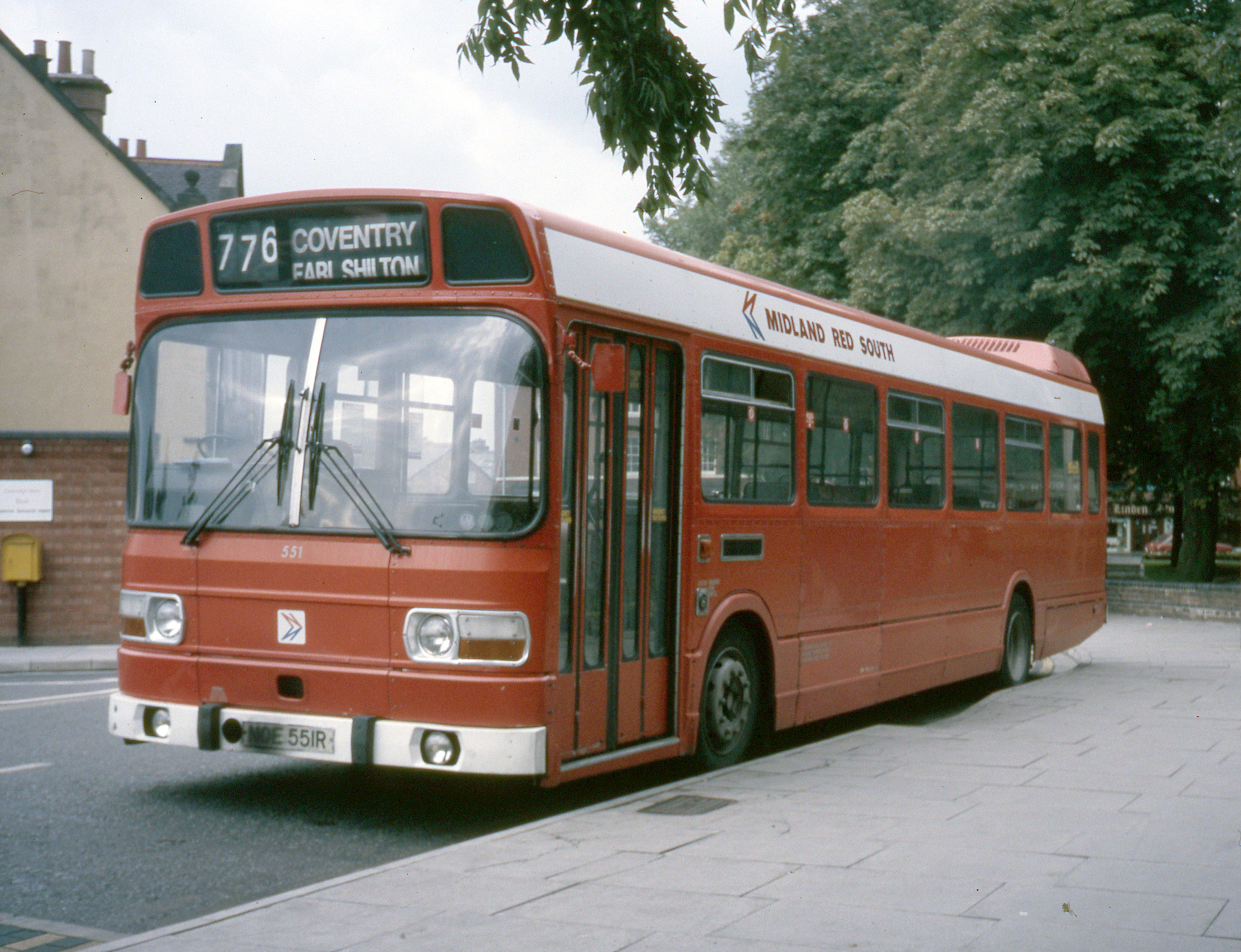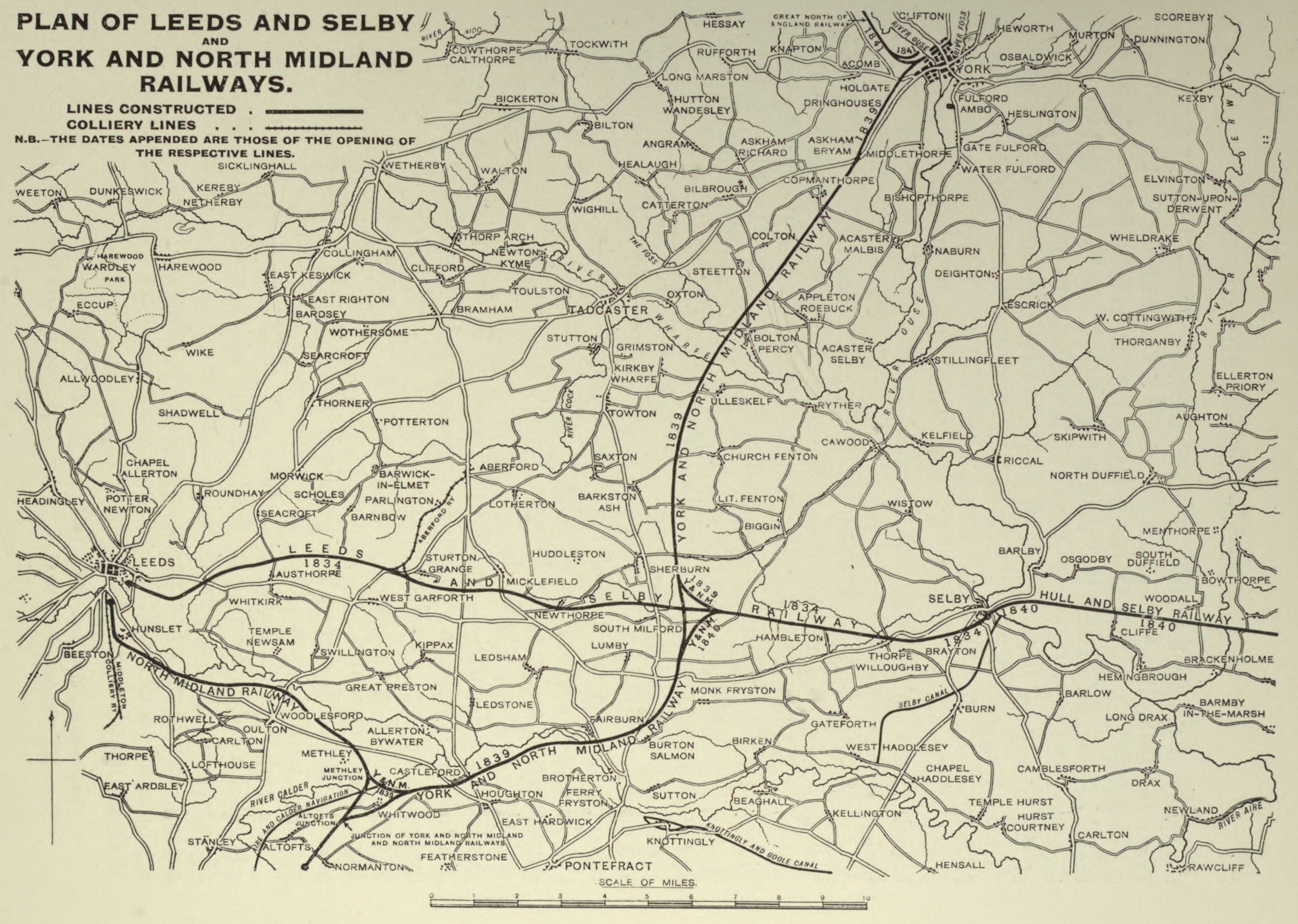|
Crimple Viaduct
Crimple Valley Viaduct, also known as Crimple Viaduct and Crimple Beck Viaduct is a railway viaduct which crosses the Crimple Valley between Pannal railway station and Hornbeam Park railway station in North Yorkshire. It is a Grade II* listed structure. It is long and has 31 arches, each of span, which reach a maximum height of above the Crimple Valley. The sharp bend in the track on the south side of the viaduct causes trains to reduce speed significantly, especially on the northbound journey. Older Pacer rolling stock units are locally known to loudly squeal whilst passing around the tight bend due to increased pressure on the bogies and wheels. It was completed in 1848 to designs by George Hudson for the York and North Midland Railway The York and North Midland Railway (Y&NMR) was an English railway company that opened in 1839 connecting York with the Leeds and Selby Railway, and in 1840 extended this line to meet the North Midland Railway at Normanton near Lee ... [...More Info...] [...Related Items...] OR: [Wikipedia] [Google] [Baidu] |
Crimple Valley
Crimple Valley is an area south of Harrogate (North Yorkshire) surrounding the River Crimple (also known as Crimple Beck). It gave its name to the synthetic yarn Crimplene Crimplene is a texturised continuous fibre launched in 1959, produced by modifying Terylene. The patent was taken out by Mario Nava of Chesline and Crepes Ltd of Macclesfield, and sold to ICI Fibres. ICI licensed the product to various throwsters ..., which was developed at the nearby ICI Laboratory. It is crossed by the Crimple Valley Viaduct. Geography of Harrogate {{Harrogate-geo-stub ... [...More Info...] [...Related Items...] OR: [Wikipedia] [Google] [Baidu] |
North Yorkshire
North Yorkshire is the largest ceremonial counties of England, ceremonial county (lieutenancy area) in England, covering an area of . Around 40% of the county is covered by National parks of the United Kingdom, national parks, including most of the Yorkshire Dales and the North York Moors. It is one of four counties in England to hold the name Yorkshire; the three other counties are the East Riding of Yorkshire, South Yorkshire and West Yorkshire. North Yorkshire may also refer to a non-metropolitan county, which covers most of the ceremonial county's area () and population (a mid-2016 estimate by the Office for National Statistics, ONS of 602,300), and is administered by North Yorkshire County Council. The non-metropolitan county does not include four areas of the ceremonial county: the City of York, Middlesbrough, Redcar and Cleveland and the southern part of the Borough of Stockton-on-Tees, which are all administered by Unitary authorities of England, unitary authorities. ... [...More Info...] [...Related Items...] OR: [Wikipedia] [Google] [Baidu] |
Network Rail
Network Rail Limited is the owner (via its subsidiary Network Rail Infrastructure Limited, which was known as Railtrack plc before 2002) and infrastructure manager of most of the railway network in Great Britain. Network Rail is an "arm's length" public body of the Department for Transport with no shareholders, which reinvests its income in the railways. Network Rail's main customers are the private train operating companies (TOCs), responsible for passenger transport, and freight operating companies (FOCs), who provide train services on the infrastructure that the company owns and maintains. Since 1 September 2014, Network Rail has been classified as a "public sector body". To cope with fast-increasing passenger numbers, () Network Rail has been undertaking a £38 billion programme of upgrades to the network, including Crossrail, electrification of lines and upgrading Thameslink. In May 2021, the Government announced its intent to replace Network Rail in 2023 with a ne ... [...More Info...] [...Related Items...] OR: [Wikipedia] [Google] [Baidu] |
Railway
Rail transport (also known as train transport) is a means of transport that transfers passengers and goods on wheeled vehicles running on rails, which are incorporated in tracks. In contrast to road transport, where the vehicles run on a prepared flat surface, rail vehicles (rolling stock) are directionally guided by the tracks on which they run. Tracks usually consist of steel rails, installed on sleepers (ties) set in ballast, on which the rolling stock, usually fitted with metal wheels, moves. Other variations are also possible, such as "slab track", in which the rails are fastened to a concrete foundation resting on a prepared subsurface. Rolling stock in a rail transport system generally encounters lower frictional resistance than rubber-tyred road vehicles, so passenger and freight cars (carriages and wagons) can be coupled into longer trains. The operation is carried out by a railway company, providing transport between train stations or freight customer facilit ... [...More Info...] [...Related Items...] OR: [Wikipedia] [Google] [Baidu] |
Viaduct
A viaduct is a specific type of bridge that consists of a series of arches, piers or columns supporting a long elevated railway or road. Typically a viaduct connects two points of roughly equal elevation, allowing direct overpass across a wide valley, road, river, or other low-lying terrain features and obstacles. The term ''viaduct'' is derived from the Latin ''via'' meaning "road", and ''ducere'' meaning "to lead". It is a 19th-century derivation from an analogy with ancient Roman aqueducts. Like the Roman aqueducts, many early viaducts comprised a series of arches of roughly equal length. Over land The longest in antiquity may have been the Pont Serme which crossed wide marshes in southern France. At its longest point, it measured 2,679 meters with a width of 22 meters. Viaducts are commonly used in many cities that are railroad hubs, such as Chicago, Birmingham, London and Manchester. These viaducts cross the large railroad yards that are needed for freight trains there, ... [...More Info...] [...Related Items...] OR: [Wikipedia] [Google] [Baidu] |
Pannal Railway Station
Pannal is a village in the Harrogate district of North Yorkshire, England. Historically part of the West Riding of Yorkshire, it is situated to the immediate south of Harrogate. Since 2016 it has formed part of the new civil parish of Pannal and Burn Bridge. The village is served by Pannal railway station on the Harrogate (Railway) Line between Leeds and York. History and etymology Pannal has been an important settlement for centuries. It developed in the middle of the former Knaresborough Forest and is believed to date back to the Bronze Age. Pannal was earlier known as Rossett, recorded in the Domesday Book of 1086 as ''Rosert'' (from the Old English ''hross hyrst'', meaning "horse wood"). Until the early 19th century the village of Pannal was part of Beckwith with Rossett, one of the eleven constableries within the Forest of Knaresborough, but the parish, which appears to have covered the same area as the constablery, was known as Pannal. The name Rossett survives in ... [...More Info...] [...Related Items...] OR: [Wikipedia] [Google] [Baidu] |
Hornbeam Park Railway Station
Hornbeam Park is a railway station on the Harrogate Line, which runs between and via . The station, situated north of Leeds, serves the spa town of Harrogate in North Yorkshire, England. It is owned by Network Rail and managed by Northern Trains. Facilities Access to both platforms is step-free, and although the station is unstaffed (so ticket must be purchased on the train), ramps are available for access to the trains from the platforms. The station has basic shelters on each platform (which are offset from each other) and train running details are provided via automatic announcements, timetable posters and CIS displays. Services As of the May 2021 timetable change, the station is served by two trains per hour between Leeds and Knaresborough, with one train per hour extending to York. Additional services operate at peak times. During the evening and on Sunday, an hourly service operates between Leeds and York. All services are operated by Northern Trains Northern Tr ... [...More Info...] [...Related Items...] OR: [Wikipedia] [Google] [Baidu] |
Pacer (train)
Pacer was the operational name of the British Rail Classes 140, 141, 142, 143 and 144 diesel multiple unit railbuses, built between 1980 and 1987. They were inexpensively developed using a passenger body based on the Leyland National bus on top of a chassis based on the HSFV1 research vehicle. The railbuses were intended as a short-term solution to a shortage of rolling stock, with a lifespan of no more than 20 years. As modernised replacements were lacking, the Pacer fleet remained in service on some lines until 2021 37 years after their introduction in 1984. All Pacer trains were scheduled to be retired by the end of 2019 as the Rail Vehicle Accessibility Regulations require that all public passenger trains must be accessible to disabled people by 2020 however the Pacer units were given dispensation until the end of 2020. Only one Pacer (the modernised 144e) met this requirement, and the remainder were therefore planned to be withdrawn by that date. Furthermore, a decision ... [...More Info...] [...Related Items...] OR: [Wikipedia] [Google] [Baidu] |
Bogie
A bogie ( ) (in some senses called a truck in North American English) is a chassis or framework that carries a wheelset, attached to a vehicle—a modular subassembly of wheels and axles. Bogies take various forms in various modes of transport. A bogie may remain normally attached (as on many railroad cars and semi-trailers) or be quickly detachable (as the dolly in a road train or in railway bogie exchange); it may contain a suspension within it (as most rail and trucking bogies do), or be solid and in turn be suspended (as most bogies of tracked vehicles are); it may be mounted on a swivel, as traditionally on a railway carriage or locomotive, additionally jointed and sprung (as in the landing gear of an airliner), or held in place by other means (centreless bogies). In Scotland, the term is used for a child’s (usually home-made) wooden cart. While ''bogie'' is the preferred spelling and first-listed variant in various dictionaries, bogey and bogy are also used. Rai ... [...More Info...] [...Related Items...] OR: [Wikipedia] [Google] [Baidu] |
George Hudson
George Hudson (probably 10 March 1800 – 14 December 1871) was an English railway financier and politician who, because he controlled a significant part of the railway network in the 1840s, became known as "The Railway King"—a title conferred on him by Sydney Smith in 1844. Hudson played a significant role in linking London to Edinburgh by rail, carrying out the first major merging of railway companies (the Midland Railway) and developing his home city of York into a major railway junction. He also represented Sunderland in the House of Commons. Hudson's success was built on dubious financial practices and he frequently paid shareholders out of capital rather than money the company had earned. Eventually in 1849, a series of enquiries, launched by the railways he was chairman of, exposed his methods, although many leading the enquiries had benefited from and approved of Hudson's methods when it suited them. Hudson fell a long way, becoming bankrupt, and after losing his Sun ... [...More Info...] [...Related Items...] OR: [Wikipedia] [Google] [Baidu] |
York And North Midland Railway
The York and North Midland Railway (Y&NMR) was an English railway company that opened in 1839 connecting York with the Leeds and Selby Railway, and in 1840 extended this line to meet the North Midland Railway at Normanton near Leeds. Its first chairman was the railway financier George Hudson, who had been called the railway king. The railway expanded, by building new lines or buying or leasing already built ones, to serve Hull, Scarborough, Whitby, Market Weighton and Harrogate. In 1849 Hudson resigned as chairman as an investigation found financial irregularities in his running of the company. The results of a price war in the early 1850s led to amalgamation and on 31 July 1854 the Y&NMR merged with the Leeds Northern Railway and the York, Newcastle & Berwick Railway to form the North Eastern Railway. Origins Having seen the success of the Liverpool and Manchester Railway and, in 1833, Acts of Parliament for lines to London from Lancashire – the Grand Junction and ... [...More Info...] [...Related Items...] OR: [Wikipedia] [Google] [Baidu] |







.jpg)